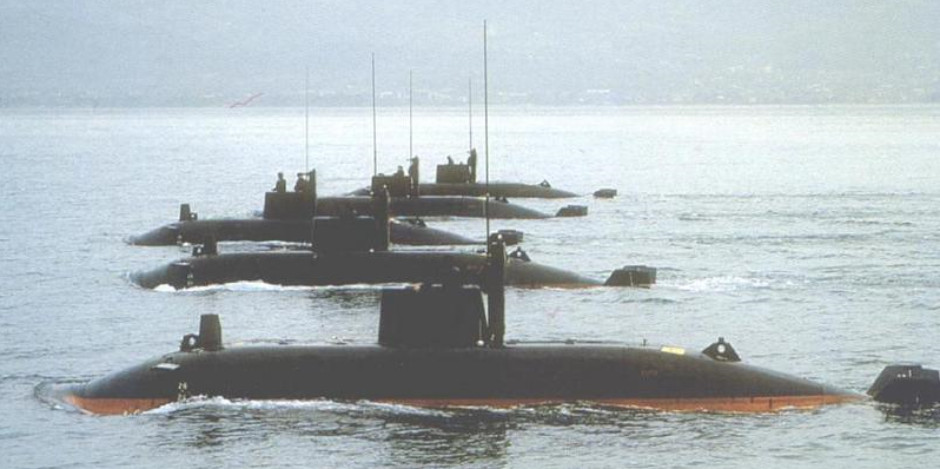

Yugoslavian X-Craft: R-3E

 During the Cold War, Yugoslavia gained a reputation for special forces craft, chief among which was the R-3E X-craft. Developed in the Cold War it was in many respects ahead of its time as a dry-SDV.
During the Cold War, Yugoslavia gained a reputation for special forces craft, chief among which was the R-3E X-craft. Developed in the Cold War it was in many respects ahead of its time as a dry-SDV.
Original artwork - CLICK for HIGH-RESOLUTION image. 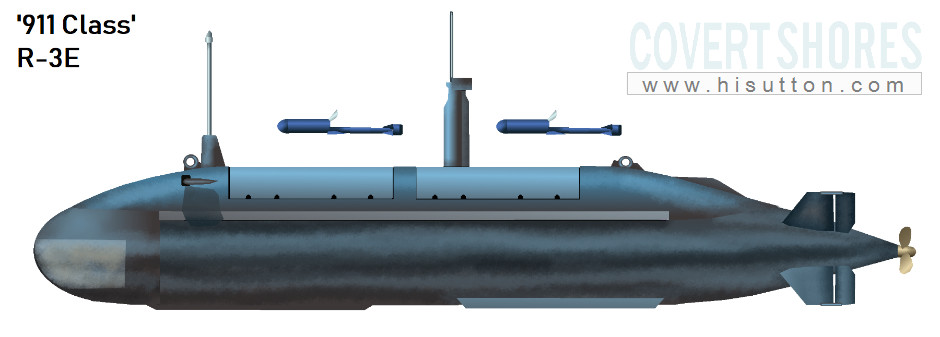
The real M-100D
Although the whole class is often mislabeled M-100D, the real M-100D design was never built.
By the 1980s the sabotage mission was well established in the doctrine of the Yugoslavian Navy (JRM). Dedicated sabotage subs were part of the ‘partisan’ tactics within the Total National Defense plan; the attack subs along with surface navy were part of the conventional first line of the defense, and the sabotage subs part of the unconventional second line of defense. The JRM’s means of delivering such an attack was far from satisfactory however. The main transport was expected to be the indigenous Heroj and Sava class submarines which were small by conventional submarine standards and ideally suited to coastal operations. But they were also the JRM’s only conventional attack submarines and their natural employment in a full-scale war was to attack the enemy with torpedoes. The attack subs couldn’t adequately carry the R2 2-man swimmer delivery vehicles, and even if they could the maximum load of two submersibles equated to just 2-4 commandos with 2 x 50kg limpet mines per R2. Smaller R1 single-diver scooters could be carried but these had a much shorter range so the submarine would have to get much closer to the target, dangerously close. Additionally the R1s would be carried internally and exited via the torpedo tubes, thus further limiting the regular war-load of torpedoes. And lastly, much of the Adriatic was shallow even for these small submarines, particularly the coastal shelf on the Italian side which was just 20m (65ft) deep.
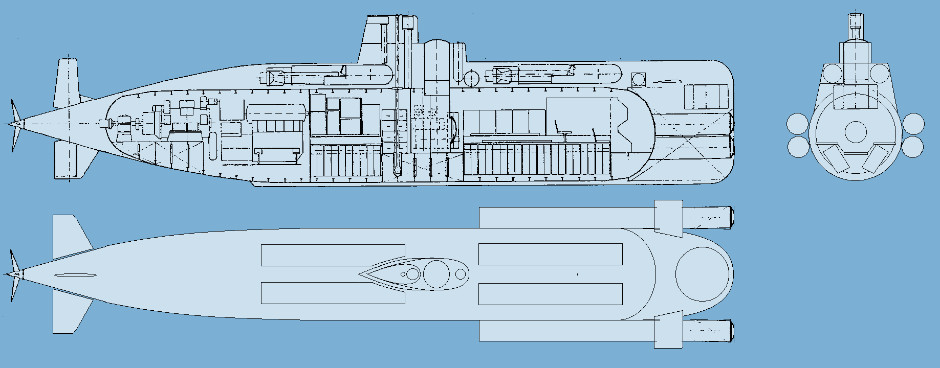
Therefore the new requirement for midget submarines specifically suited to commando operations was raised in 1977. The specifications called for a diesel-electric dry submarine with a maximum displacement of 100 tons (hence M100D – ‘D’ for diesel) and capable of operating in up to 150m depth at 4kt. More importantly, it had to be able to maneuver in very shallow waters (10-15m, 32-49ft) at extremely slow speeds, which would be unthinkable in conventional subs. Two main designs concepts had already been proffered by Yugoslavia’s indigenous shipbuilding institute at Zagreb; the M40 and M100. The first was a very small diversionary submarine while the latter, although still small, was a larger 20m (65ft) long dry submarine equipped with both torpedoes and R1 submersibles. Although only a concept, the M-100 was an interesting design with a few innovations. Being twice as long as a wartime X-Craft there was room in the free-flooding bow for a cylindrical sonar array like a regular attack submarine. This was paired with four heavyweight 533mm (21”) torpedoes tubes mounted externally, two either side of the hull. This arrangement gave the design considerable punch, but it was also designed from the outset as a dry SDV with room for several commandos and four R1 scooters in purpose built compartments under the casing. The hull was only 2.62m (8.5ft) in diameter which ordinarily would not be enough to place the batteries under the floor, but the engineers came up with a clever way around this; the batteries were placed along each side so that the floor could be lowered between them allowing the crew to walk without crouching. The top of the batteries formed a bench down each side of the submarine.
Get The essential guide to World Submarines
This Covert Shores Recognition Guide Covers over 80 classes of submarines including all types currently in service with World Navies.Check it out on Amazon
Another novel feature was that the commander, helmsman and sensor officer (sonar, radio, radar) sat in the nose of the pressure hull at the front of the submarine rather than in the middle of the boat. This left amidships free for a large diver lock-out chamber. Curiously, while the commander sat at the front, the periscope was still mounted amidships, relying on video, which was conceptually way ahead of its time and, arguably, ahead of technology. Both the M-40 and M-100 concepts were designed to meet the customer’s requirements, which in the case of the M-100 was asking too much for such a small craft. The designers had reservations as to whether it could actually work. Despite these reservations, the basic concept of a larger dry midget submarine won out over the ‘diversionary’ submarine, but the design actually built was much improved over the M100D.
R-3E
The resulting R-3E was purpose built for covert operations in extremely shallow waters close to the target. The attack mission with torpedoes and a large sonar were dispensed with to concentrate on the commando mission.
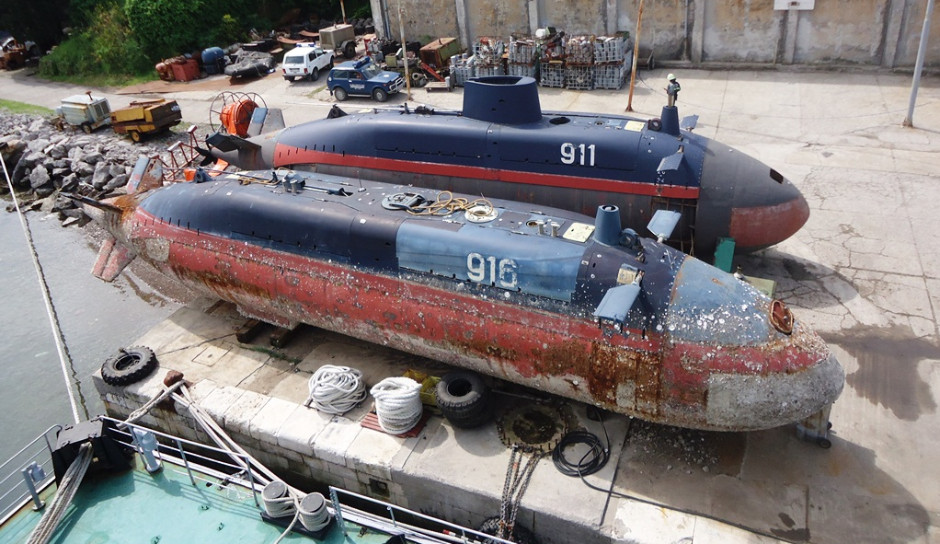
The design designation was M-31E, or R-3E following the R-1/R-2 series of SDV. In service it was often referred to as the 911 Class after the hull number of the lead boat (a convention in the Yugoslav navy). It is also sometimes referred to as the Una Class after the lead boat.
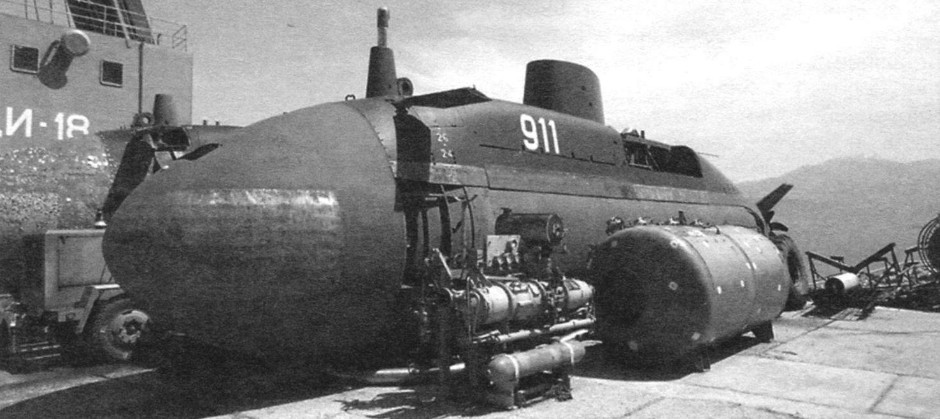
Two R-3Es. The object next to them is probably a hyperbaric chamber with compressor.
The first of six boats was launched in 1983 with the last joining the fleet in 1988. At less than 20m (65ft) long the R-3Es were less than half the length of the attack boats. Autonomy was 160hrs (6 ½ days) with a full crew, or 96hrs (4 days) with four additional divers. They could carry four large Yugoslavian M-70 mines or R1 scooters with six or twelve locally designed limpet mines. Interestingly the M-70 mines could be released from inside the submarine without divers having to exit the submarine. Like the original M100DE design the load was carried externally under four streamlined hatches in the upper casing. The hatches and casing were all fiberglass and although it did not have a conventional sail, a two-man fiberglass conning tower was sometimes bolted over the main hatch. This adaption was apparently created by a very wet crew, and reduced the amount of seawater taken aboard when cruising on the surface. It interfered with diver operations however and was removed when deploying commandos. A hydraulically powered ventilation and aerial mast was just behind this and folded aft along the center of the rear deck. It was also a handy place to put the standard navigation lights (red to port, green to starboard) and so was often raised when running on the surface. Because no torpedo tubes were carried internally the control center could be at the front of the pressure hull a bit like driving a car but without windows. The commander sat on a padded bench behind the planesman looking through the periscope which was mounted at the front of the hull also.

On top of the hull two permanent large hoisting lugs allowed easy lifting in and out of the water. Stabilizers on the lower hull and an X-form tail optimized the craft for shallow-water operations. The X-form tail was first tried on USS Albacore in 1960 although the R-3E was among the first operational submarines to use this configuration. More complex than conventional controls, the diagonal surfaces provide better maneuverability particularly in shallow water. In the interests of noise reduction the R3E was fully electric with no diesel engine to recharge the batteries. Unlike many older submarines the electric motor was AC to make it safer, so an DC/AC converter was in place to convert the DC from the batteries into AC. Recharging could be done by ‘plugging in’ at the pier, or by one of the three purpose built mobile generators that could be wheeled onto the harbor or jetty, or carried on a boat before the mission. A single charge could give the submarine a useful range of 200-250 nautical miles, enough for a raid on the Italian coast. The type was also reputed to be incredibly quiet, able to pass undetected across the hydrophone array protecting Pula harbor. It was also claimed that in the late 1990s during the war with NATO, an R-3E was able to trail a NATO submarine undetected. This has not been verified but it illustrates their reputation as extremely quite boats. This ultra-quiet running allowed the R-3Es to operate much closer to enemy ports than the larger and older attack boats, placing it within range to lay mines or deploy its commandos; in some respects the R-3E can be thought of as a large dry SDV, deploying its commandos only 12nm from the target. The full complement of six divers could be deployed very quickly in a single lock-out, although for reconnaissance missions two divers was more common.
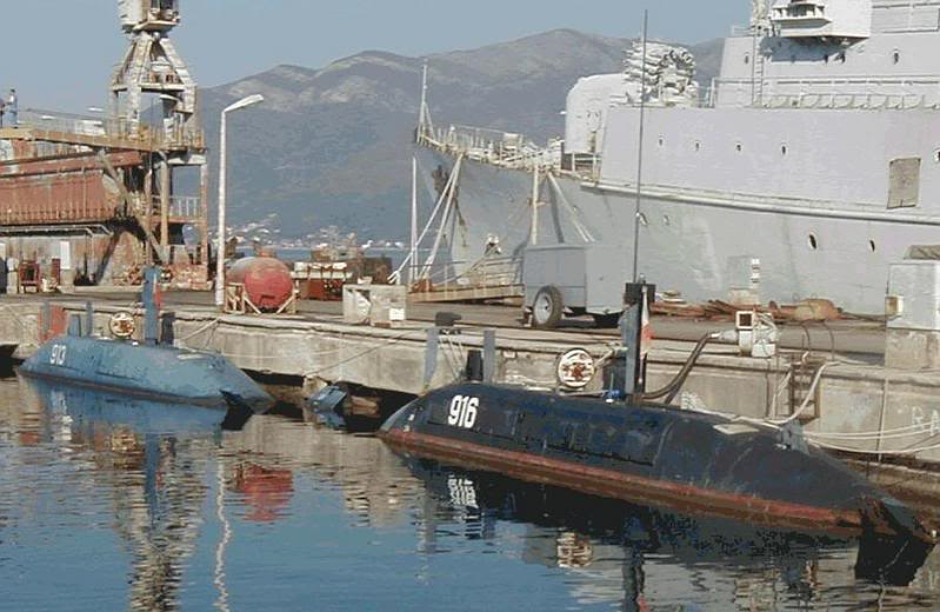
Fate:

THE book on Special Forces subs Covert Shores 2nd Edition. A world history of naval Special Forces, their missions and their specialist vehicles. SEALs, SBS, COMSUBIN, Sh-13, Spetsnaz, Kampfschwimmers, Commando Hubert, 4RR and many more.
Check it out on Amazon
Croatian upgrade: Velebit
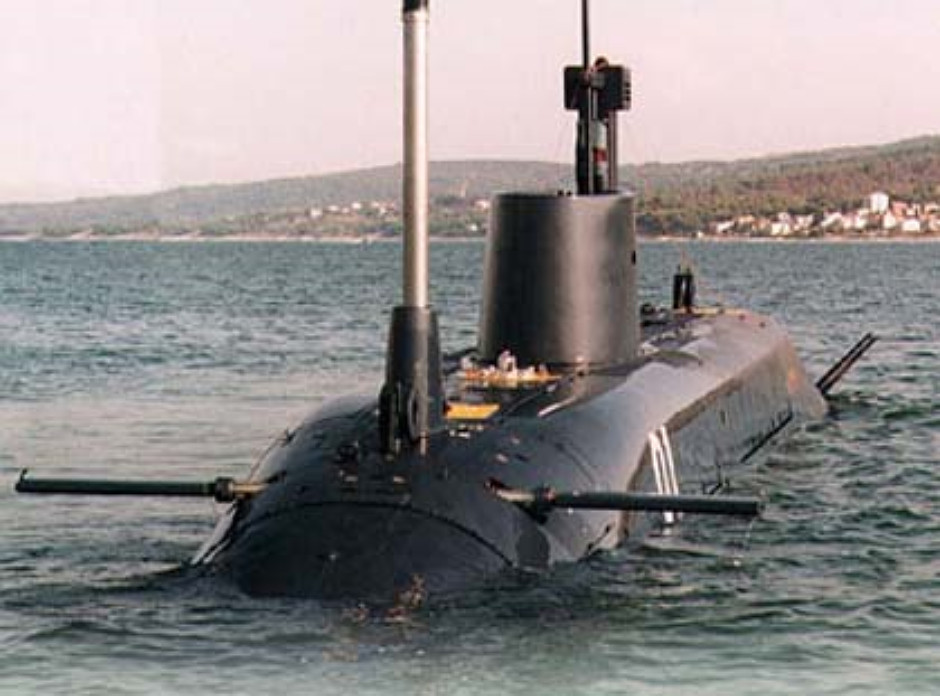
 With the break-up of Yugoslavia Croatia inherited much of the coastline but only one of the R-3Es. Renamed P-01 Velebit, it was put through a modernization which saw a diesel generator fitted to greatly improve its endurance. This came at the expensive of some batteries.
With the break-up of Yugoslavia Croatia inherited much of the coastline but only one of the R-3Es. Renamed P-01 Velebit, it was put through a modernization which saw a diesel generator fitted to greatly improve its endurance. This came at the expensive of some batteries.
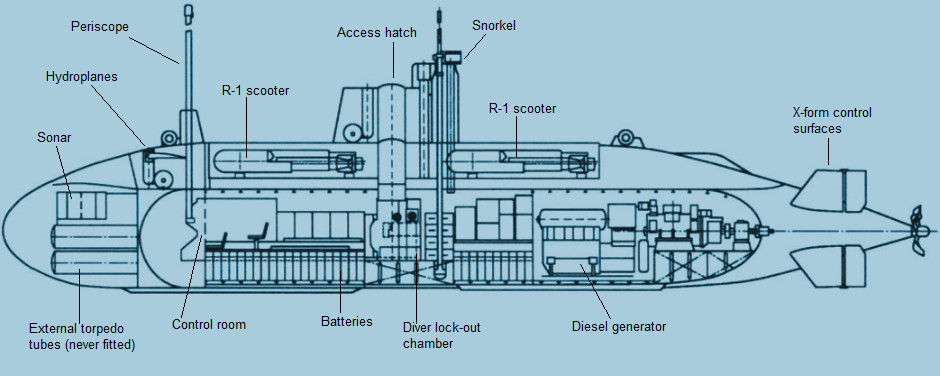
She re-entered service in 1996 and served until 2006.
Drakon 220

 The Drakon-220 is a new midget submarine design proposed by Adria-Mar in Croatia. It is 50% longer and twice as heavy as the R-3E which allows it to carry two torpedo tubes under the casing and accommodate a diesel-electric powerplant for a ten-fold increase in range. It retains the characteristic X-form control surfaces but has a new distinctive vertical bow to house the larger sonar and torpedo tubes, plus a fixed sail with integral diesel exhaust. Special forces optimisation remains per the R-3E.
The Drakon-220 is a new midget submarine design proposed by Adria-Mar in Croatia. It is 50% longer and twice as heavy as the R-3E which allows it to carry two torpedo tubes under the casing and accommodate a diesel-electric powerplant for a ten-fold increase in range. It retains the characteristic X-form control surfaces but has a new distinctive vertical bow to house the larger sonar and torpedo tubes, plus a fixed sail with integral diesel exhaust. Special forces optimisation remains per the R-3E.


Specifications
Length: 30.27 meters
Beam: 3.6m meter
Displacement: 220 tons surfaced, 255tns submerged
Speed: Maximum 10.2 kts, minimum 2kts with rudders functioning
Operating depth: 150m
Endurance (without surfacing): 280nm at cruising speed of 3kts, 31nm at 10.2kts (with 20% battery reserve). 3000nm patrol or up to 14 days
Armament: 2 x 533mm (21") torpedo tubes.
SDVs: 4 x Diver Propulsion Devices (e.g. R-1 scooters) carried externally under casing
Crew: 9
Special Forces: 4
Related articles (Full index of popular Covert Shores articles)

 Comex Sagittaire midget submarine
Comex Sagittaire midget submarine

 SBS Archimedes SDV
SBS Archimedes SDV

 Soviet Project 1015 'SPLC' Special Purpose midget submarine
Soviet Project 1015 'SPLC' Special Purpose midget submarine

 Iranian Nahang Class midget sub
Iranian Nahang Class midget sub

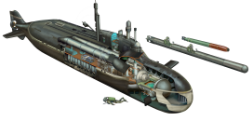 Piranha Class (LOSOS) midget sub
Piranha Class (LOSOS) midget sub

 MSV-75 midget sub design
MSV-75 midget sub design

 HDS-500 Midget Submarine
HDS-500 Midget Submarine

 Maritalia GST-23+ Midget Submarine
Maritalia GST-23+ Midget Submarine

 Chinese MS200 midget submarine
Chinese MS200 midget submarine

 SDV Mk.9 SEAL Delivery Vehicle
SDV Mk.9 SEAL Delivery Vehicle

 Cos.Mo.S CE4F 4-man SDV
Cos.Mo.S CE4F 4-man SDV


 Lockheed S301i, S351 and S302 Dry Combat Submersibles
Lockheed S301i, S351 and S302 Dry Combat Submersibles

 Vogo ASDV-800 Dry Combat Submersible
Vogo ASDV-800 Dry Combat Submersible

 Narwal / Orca Dry Combat Submersible (UWTG)
Narwal / Orca Dry Combat Submersible (UWTG)


 USN Navy SEAL's UOES3 (Button 5.60) Dry Combat Submersible (DCS)
USN Navy SEAL's UOES3 (Button 5.60) Dry Combat Submersible (DCS)

 Cos.Mo.S CE2F chariot
Cos.Mo.S CE2F chariot

 Naval Spetsnaz in Hybrid Warfare (Russian SDVs and DPVs)
Naval Spetsnaz in Hybrid Warfare (Russian SDVs and DPVs)



